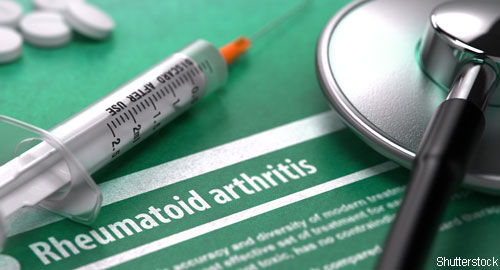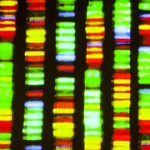 What if the cure for rheumatoid arthritis (RA) is lying in wait within the body, just waiting to be found?
What if the cure for rheumatoid arthritis (RA) is lying in wait within the body, just waiting to be found?
“It’s there,” says I-Cheng Ho, MD, PhD, a rheumatologist and immunologist at Brigham and Women’s Hospital, Boston, and an associate professor of medicine at Harvard Medical School.
Dr. Ho leads a research team that has been systematically uncovering the molecular changes that indicate the earliest signs of pre-symptomatic RA in high-risk patients. In symptomatic patients, the researchers have further identified how specific RA therapy may revert these signals. Through this work, the team is coming closer to understanding how gene-expression analysis of an RA patient may provide a pathway to personalized treatment. Such a pathway may lead to long-term remission without medication, which may mean a cure.
“Within three to four years, we [may] see this personalized approach to RA treatment becoming a reality in the practice setting,” Dr. Ho says.
RA at the Molecular Level
Much like when a patient’s bacterial infection is cultured to determine the best antibiotic treatment, Dr. Ho sees the potential to test a patient’s blood and identify how RA is modifying their gene expression. This ability would help identify how specific therapies may target these modifications to resolve abnormalities.
This understanding of RA’s molecular level began when Dr. Ho and colleagues discovered an RA-prone genetic variation at PTPN22 is associated with increased activity of peptidyl arginine deiminases (PADs) that catalyze the conversion of amino acid arginine to the amino acid citrulline. This association leads to hypercitrullination in peripheral blood mononuclear cells.1
Next, they found hypercitrullination, along with the abnormal expression of a handful of genes, in first-degree relatives of RA patients who were healthy and do not carry the RA-prone genetic variation at PTPN22. Instead, researchers found this molecular signature, including hypercitrullination, is caused by the attenuated expression of PTPN22.2
This molecular signature characterized by dysregulated PTPN22 appears in patients with untreated RA. But when the study compared patients with treated vs. untreated RA, the researchers did not detect hypercitrullination in treated RA patients, suggesting that effective treatment reduces the level of citrullination.
Response to Specific TNFa Inhibitors
“Because we don’t see hypercitrullination in RA patients who have been treated and have low disease activity, we wondered if this molecular signature is reversible,” Dr. Ho says.
This hypothesis was recently confirmed by Dr. Ho using blood samples from a longitudinal RA cohort. Further, his team has developed a bioassay that measures the effect of RA drugs on the molecular signature to predict a patient’s response to various therapies, including TNFa inhibitors. Currently, the findings for this latest research are slated for publication. Although further study will be needed to validate these findings, Dr. Ho is eager for his rheumatologist colleagues to understand the ramifications of this research.
“This bioassay could give us a method that is easy to adopt in the clinical setting to test a patient’s blood and determine if a therapy is effective long before the [current] months-long period it takes to observe if a therapy is leading to improvement,” he says.
Personalized Rheumatology Care
As he and his research team continue to work to determine more about how inflammatory diseases may be understood at the molecular level through dysregulated gene expression, Dr. Ho sees several important ramifications of this work. He notes that:
- Testing for dysregulated PTPN22 will help identify patients at risk for RA who haven’t developed signs found in current laboratory approaches, such as testing positive for anti-cyclic citrullinated peptide antibody;
- Uncovering additional genes that are abnormally expressed, such as PTPN22, may help leverage better ways to develop and target therapies with implications for finding a cure; and
- Tracking this signature in RA patients may help determine patients who can safely stop therapy.
Dr. Ho believes that “finding this signature of RA gets us closer to identifying the signatures for other inflammatory diseases.” He hopes to identify more of these signatures by studying patients diagnosed with lupus or psoriatic arthritis.
Carina Stanton is a freelance science journalist in Denver.
References
- Chang H-H, Dwivedi N, Nicholas AP, et al. The W620 polymorphism in PTPN22 disrupts its interaction with peptidylarginine deiminase type 4 and enhances citrullination and NETosis. Arthritis Rheum. 2015 Sep;67(9):2323–2334.
- Chang H-H, Liu G-Y, Dwivedi N, et al. A molecular signature of preclinical rheumatoid arthritis triggered by dysregulated PTPN22. JCI Insight. 2016 Oct 20;1(17):e90045.
